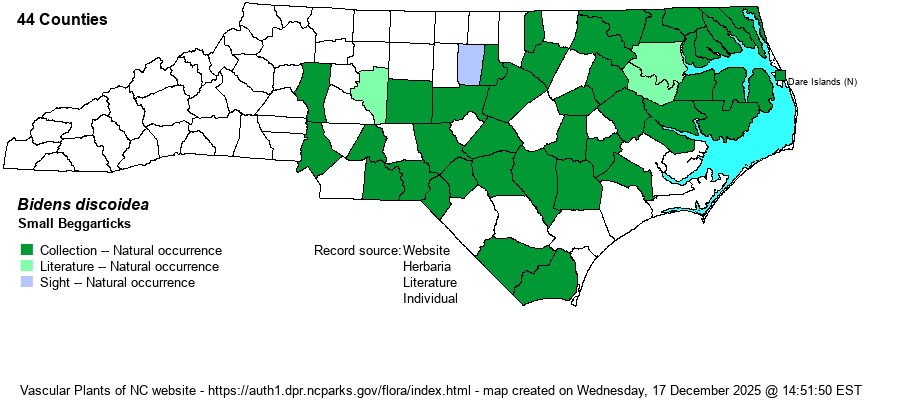| Author | (Torrey & A. Gray) Britton | |
| Distribution | Essentially throughout the Coastal Plain (including the Sandhills region) and the lower Piedmont. Ranges west only to Iredell County. Gaps probably are not real and should be closed with additional collecting.
N.S. to MN, south to northern FL and TX. | |
| Abundance | Infrequent to locally common in the Coastal Plain and Sandhills region; uncommon and somewhat local in the eastern Piedmont. | |
| Habitat | Blackwater and brownwater swamp forests, old oxbows, backup channels, cypress-gum swamps. This strictly wetland species shows a decided preference for shade. | |
| Phenology | Flowering and fruiting late August-November. | |
| Identification | Among the rayless beggarticks, this one stands out by its somewhat more delicate look and the tiny, usually solitary, heads only 4-5 mm long and generally with only 10-20 disk florets. The leaves are dissected into usually three leaflets as with the similar but common B. frondosa. Note also the shaded habitats, as that species often grow in full sun or dappled shade. | |
| Taxonomic Comments | None
| |
| Other Common Name(s) | Discoid Beggarticks, Swamp Beggarticks | |
| State Rank | S4 | |
| Global Rank | G5 | |
| State Status | | |
| US Status | | |
| USACE-agcp | FACW link |
| USACE-emp | FACW link |

